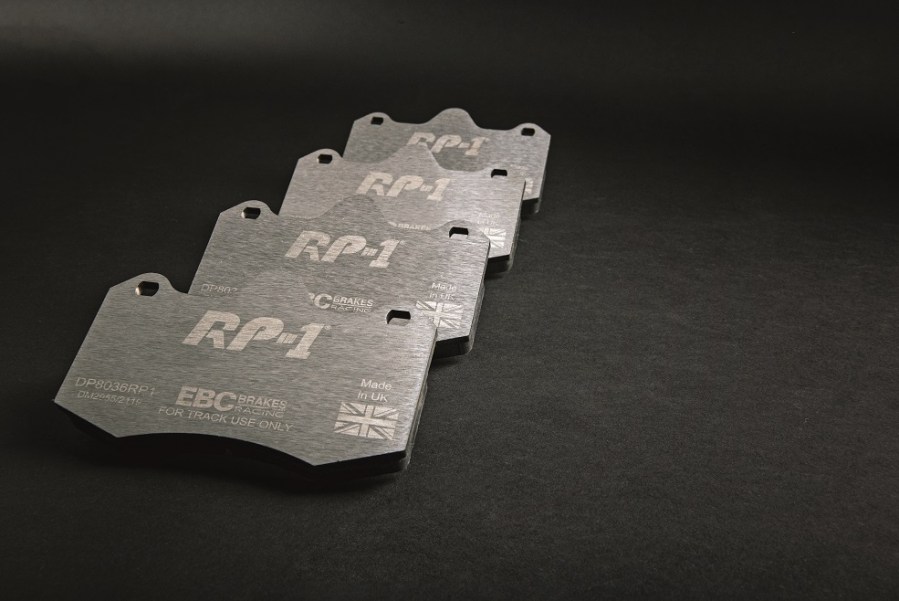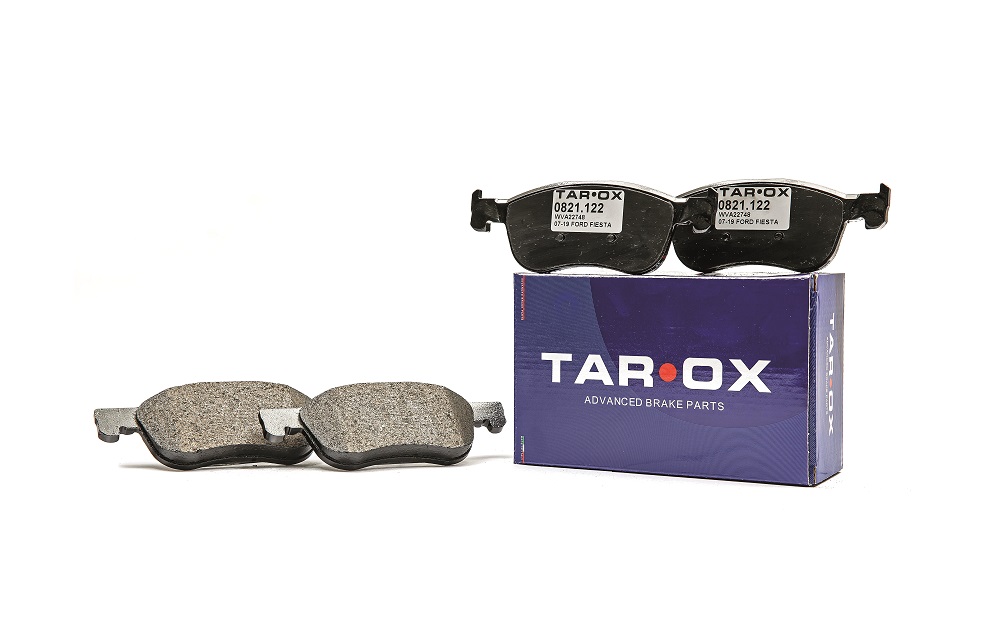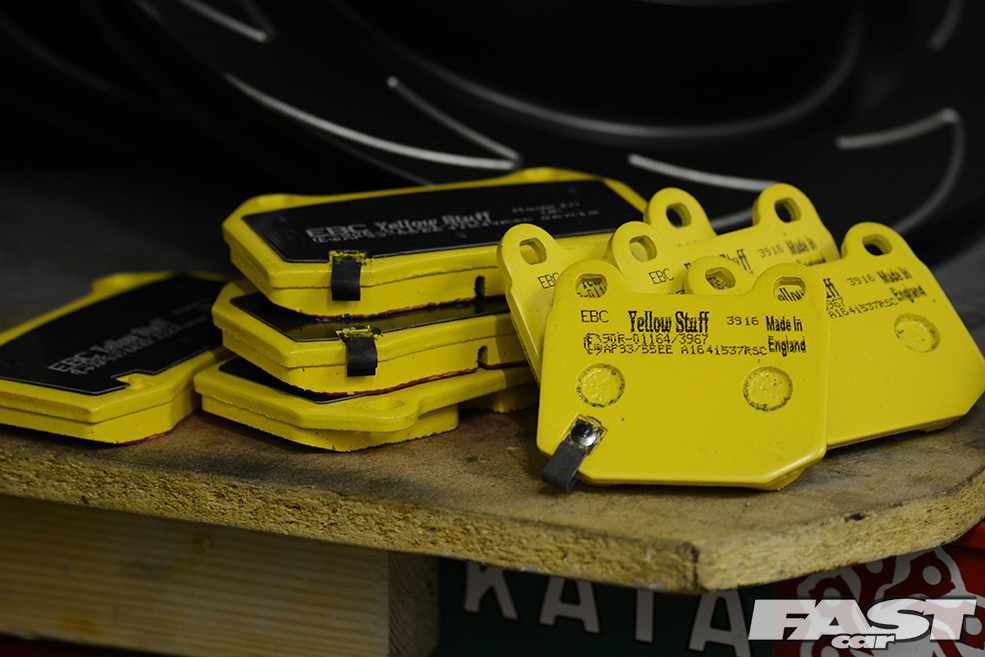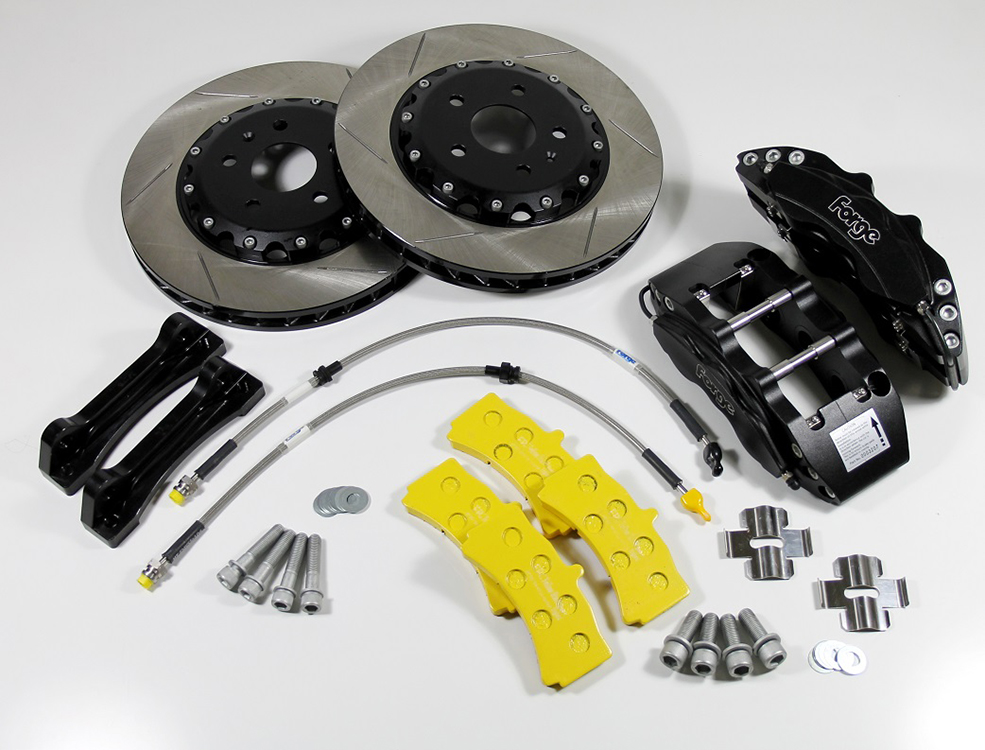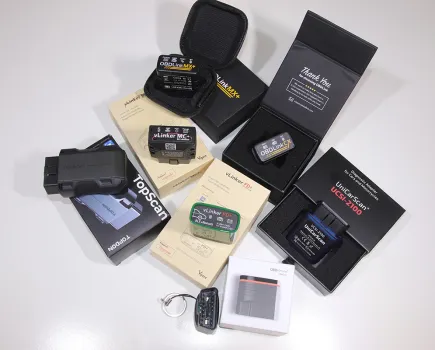We get to grips with the brake pad options available, and stop to see what they’re all about… enough with the puns, it’s our brake pads guide!
Brake pads are an essential component of your car’s braking system. It’s also a part that is guarantied to need replacing due to wear and tear. Whether you do all of your driving on the public road, on track or a mixture of both, choosing the right brake pads for your needs is crucial. And if you’re looking for the best brands, be sure to check out our guide to the best brake pads & rotors in 2023.
First, though, we’ll explain what brake pads are, how they work, what they’re made of and what you should be considering when you buy new ones. Without further ado, here’s everything you need to know about brake pads.
What are brake pads and how does it work to slow the car down?
During braking, force applied to the pedal is converted to a hydraulic pressure in the master cylinder. This brake fluid pressure transfers instantaneously, via the brake lines, to the brake calipers. The increase in pressure causes the caliper pistons to extend, clamping the brake pad against the rotor, which serves to convert the vehicle’s kinetic energy into thermal energy via friction.
The actual job of the brake pad is to generate a consistent level of friction against the rotor (disc) across a wide range of temperatures. It also must maintain performance in the wet, have acceptable levels of wear, not produce too much dust and (preferably) be silent in operation.
The real challenge lies with the fact that all these desirable attributes are mutually exclusive. It’s not possible to develop a brake pad that will work perfectly on the road, performs great on track, has huge wear life, produces no dust and is still totally silent in operation. So, in the end the user must make a choice. This often means compromising in some areas to increase performance in others that are more desirable.
Are all brake pads the same?
The quality and performance of pads in today’s marketplace varies massively. The good news is that price is usually an indicator of quality, meaning you often get what you pay for. But it’s important to appreciate that better quality pads usually wear much slower. They also give you significantly improved braking performance throughout its longer life. There really isn’t any logic in skimping when it comes to braking. Think ‘pound-per-mile’, and remember workshop labor rates aren’t cheap, meaning a set of quality pads that lasts twice as long could be saving you additional mechanic’s fees.
There’s an almost bewildering choice out there, but if you speak to the brake pad manufacturer, there will usually be a technician on hand. They will gladly guide you towards making the right choice.
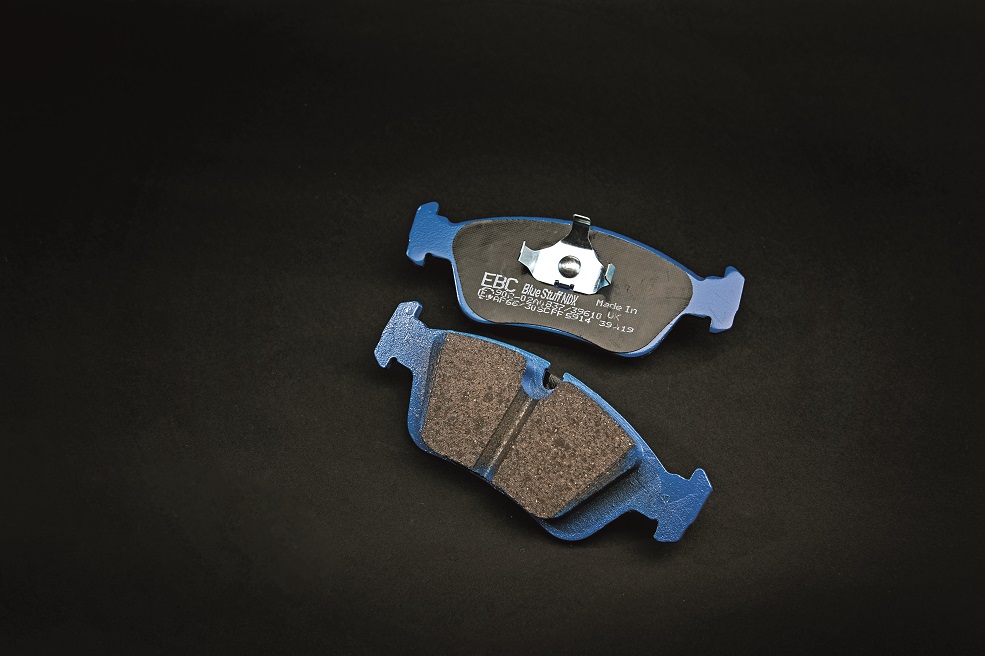
What are brake pads made of?
Brake pads can contain anything from ten to 30-plus separate ingredients. These include steel fiber, copper, graphite, aramid fibers and rubber. Manufacturers often bind these together with a phenolic resin (except in sintered pads, where they fuse the metallic ingredients together under immense heat and pressure).
Carbon brakes aside, you can generally split pads into two types: organic and sintered. There are also semi-metallic pads, which fall somewhere between the two.
Organic pads are typically quiet. They’re also very kind on discs, produce minimal brake dust and have excellent pedal feel. The drawback of organic brake linings is that it’s challenging to produce a pad that will maintain performance at very high temperatures. The organic resin breaks down, which leads to brake fade.
Semi-metallic pads contain higher levels of steel fiber. This makes them more abrasive on discs and therefore produce more dust. They are attractive because it’s less of an engineering challenge to maintain braking performance at extreme brake temperatures.
How do aftermarket pads differ from OEM versions?
Almost all OE pads are semi-metallic varieties. They contain abrasives like steel fiber that make them perform pretty well, as well as being cheap to mass-produce. The problem is that they can wear the disc out very quickly. OE semi-metallics are often quite snatchy under braking and are also often unsuitable for fast-road or serious track use. Aftermarket pads, either organic or high performing semi-metallics, aim to increase the friction level slightly, reduce the chance of brake fade, produce lower dust, and should provide a more progressive response to the brake pedal.
Track-only pads take things further still. They aim to provide fade-free performance at the expense of an increase in noise and dust levels. Ultimately, good brake pads will breed driver confidence, allowing the driver to really focus on enjoying driving without the worry of brakes overheating and fading.
Why, or when, would you need to upgrade them?
Driving quickly on the road, attending track days, or just generally looking for a lower-cost option than a main dealer, are all valid reasons to upgrade to a quality aftermarket pad. Track days, in particular, put much greater strain on the braking system, so fitting high-performance pads before taking to the circuit is essential.
How important is it to get the right type of brake pads?
Most quality road pads conform to a piece of legislation called R90. This means they are independently tested to be equivalent to (or better than) OE components. You must ensure any pad you use on the road has R90 approval. If you use a non-R90 compliant pad on the road and your insurer finds out, it will almost certainly invalidate your insurance. Interestingly, though, vehicles with an aftermarket big brake kit can run whatever pads they want, as they fall outside of R90 regulations.
Legal requirements aside, some (but not all) track pads need to warm up to reach an acceptable friction. This can make them far from ideal for use on the road. The brake pad manufacturer should be your primary source of guidance; they know their products best.
What causes factory brake pads to fail, or not be suitable for the task? Do aftermarket pads suffer the same fate?
Pads don’t usually fail, but they do begin to fade when they get too hot. Every brake pad has a designed temperature operating range. It’s important to choose one that’s right for the type of driving you’ll be doing. If the pads regularly operate beyond their designed upper temperature limit then you’ll get brake fade. Pad wear will also increase considerably.
Applying temperature paint to the edge of the brake rotor is a quick and effective way to see what sort of brake temps you’re hitting. You can then use this info to guide pad selection. As a rule, you should never be frequently reaching temperatures in excess of 650C. If you are, look to direct additional cooling to the brakes via ducting, which is a low cost, low weight-penalty modification.
Are there any downsides to uprated brake pads?
Assuming you’ve chosen the right pad for how you drive your vehicle, then there aren’t really any downsides. A well-chosen aftermarket pad will often provide increased performance. It will also have a longer wear life, improved pedal feel, produce less dust, and be a good chunk less expensive than OE parts. The only exceptions are very high-performance pads designed for use on track will often be noisier and produce more dust.
Other than ensuring you get the right pad for your application, what are the most important things to look out for when buying uprated brake pads?
Aside from being R90-approved, think carefully about where you buy products. Fake pads can look identical but often haven’t been tested or certified. This can make them very dangerous. Only buy pads in original packaging. Check the security seal is not broken, and buy through respected authorized dealers.
Other than that, choose a brand that has good customer reviews. This shows they’re willing to work with you in the event of you having a problem or a complaint. Modern brake systems are complex, and having friendly and responsive tech support will help you pinpoint any problems you’re having. People often jump to conclusions and blame the new pads, or new discs, but often it’s something else that’s the root cause of the issue.
What other modifications should you consider when uprating your brake pads?
Performance brakes need quality tires to transmit the increased braking torque to the tarmac. If you’ve fitted budget tires then every stop will be grip-limited and your stopping distance is then determined by how effective your ABS is. As a result, you won’t be getting the best from the upgraded brakes.
Braided brake lines are one of the best value mods you can do to a car. Most carry a lifetime warranty, making them a fit-and-forget upgrade. Braided brake lines can withstand heat better than rubber lines, therefore limiting swelling. This in turn fights off brake fade due to overheating for longer.
Quality brake fluid is also essential. It’s quite literally the lifeblood of the braking system. Flush with new fluid no less than every two years, or more frequently for race fluid, which absorbs water more quickly.
The brake pad and brake disc together form the friction coupling, so if either is of poor quality then brake performance will suffer. People often overlook the importance of disc quality. Just because two discs are geometrically identical doesn’t mean they’re the same. The role of the brake disc is to absorb and dissipate heat – it is a heatsink. The composition of the disc can have a profound effect on its ability to conduct heat away from the pads, so a quality disc is important to prevent the pads from overheating.
What is brake fade and how to fix it?
It can be a bit disconcerting when it happens but understanding brake fade can help to prevent it in the future. Brake fade is the experience of sudden decreased braking efficiency. This is when the braking system doesn’t slow the car down like it normally would which leads to longer and further braking time and distance.
One of the main causes of brake fade is overheating. Repeated or constant use of the brakes in scenarios such as track driving, braking whilst driving down hill or driving an overloaded vehicle can cause excess heat build up. This heat prevents the braking system from creating enough friction to get the vehicle to slow.
Overheating can also affect the efficiency of the brake calipers. Brake fluid is used to compress the calipers against the brake discs, causing the pads to touch the discs. The water in brake fluid can overheat and start to boil which turns it into steam. This causes a soft brake feel when the brake pedal is pushed down, it can feel spongy and doesn’t slow the car like normal.
Another cause of brake fade can be worn pads. Some pads are made using resin to bind the materials together and under high temperatures, the resin can break down. A gas is then released from the hot resin which forms a film between the pads and discs, making it more difficult to create friction between the two.
On the road, the chance of brake fade can be reduced by driving less aggressively. Repeatedly braking at the last minute and not leaving a decent distance between you and the car in front can be a recipe for a nasty crash. When driving downhill, try to use engine braking and stay in a low gear instead of sitting on the brakes.
What about track days?
On track days make sure to give the car some time to cool down, it might be tempting to do several laps in quick succession driving as hard and as fast as you can but don’t ruin the day by setting your brakes on fire and ending the track fun prematurely.

How long do brake pads last on a track day?
This is very much dependent on how you drive, how heavy the vehicle is and what kind of circuit you’re on. Brakes on cars like the Lotus Elise or Mazda Miata will last for longer thanks to their light weight. A key way to get more out of brake pads on a track day is to upgrade them before you go. Pads that can withstand high temperatures like ceramic can dissipate heat more effectively which keeps braking performance consistent and keeps you on the track for longer.
If you look after the braking system by regularly stopping to let it cool down, pads can last between two to eight track days. Again, this depends on how aggressively you drive and how well suited the brakes are for the car. Some brakes that are specifically designed for the track need warming up before they perform optimally. These are great for the track as they have high heat resistance but are less than ideal for the road, promising around 1000 miles of on road driving before they need replacing.

